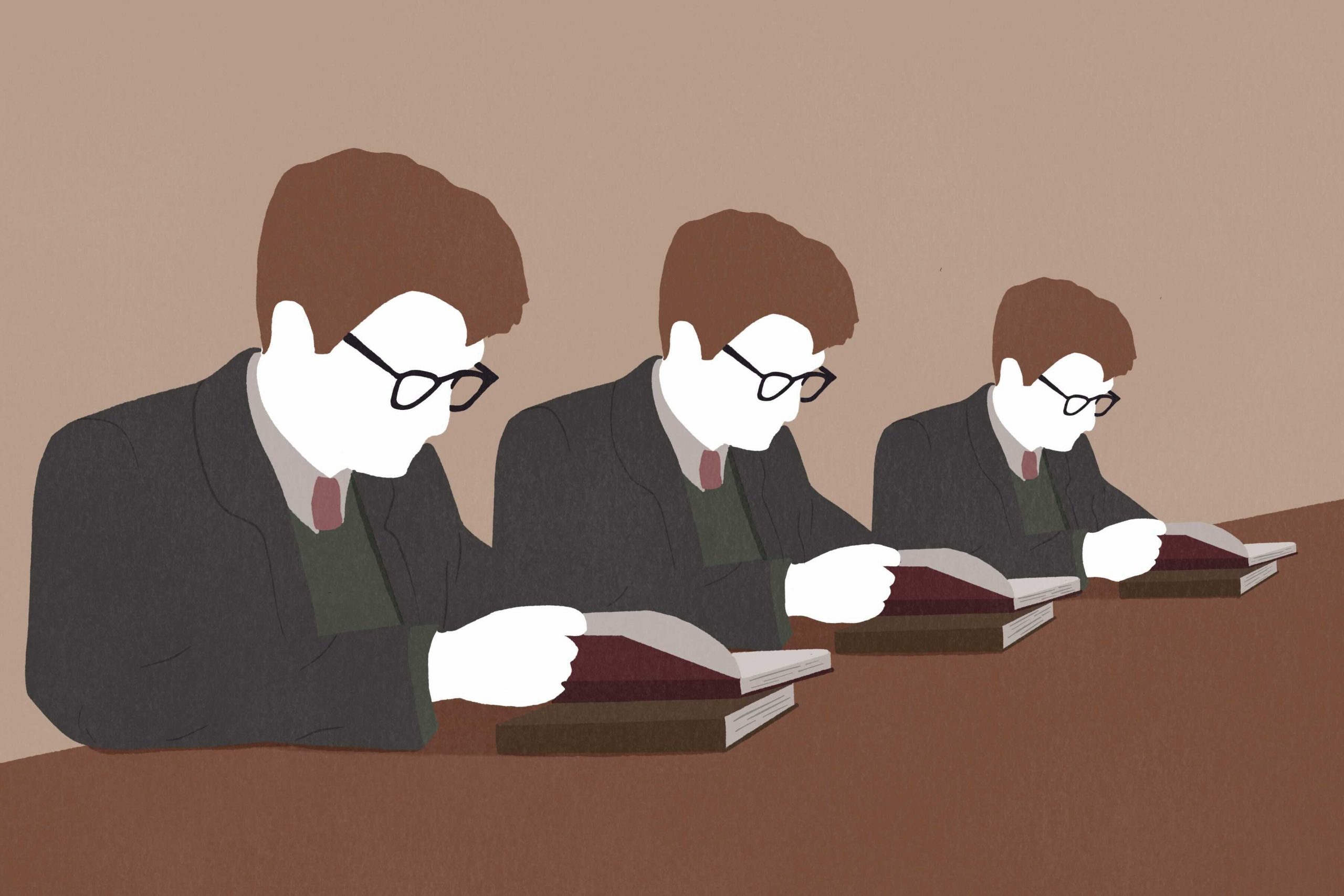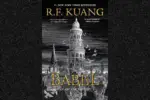Your fingertips brush across the faded and beige pages of the ancient book on the mahogany desk. The weak lamplight illuminates the Latin before your eyes, the pencil in your hand scrawling the English translation in swirling cursive on the parchment under your palm. When your eyes finally grow weary, you close the book, gather your papers and put them in your tote. You fasten your tweed jacket and exit the library, casting one last lingering look at the books lining the walls, calling out to you, begging to be read. You tuck your spectacles into your pocket as you walk, knowing you’ll soon be back.
Does this scenario appeal to you? Then you love dark academia. This aesthetic promotes classic literature, writing, the arts, Greek and Gothic culture and architecture and mythology. Visually, dark academia mood boards include images of Gothic and classical architecture, old books, Roman and Latin languages, outfits of tweed with plaid, people in school uniforms and moss growing across ancient stone.
I personally love this aesthetic. It’s beautiful and timeless, and I appreciate its focus on higher learning and education. It has a universality for all those who enjoy the classics and humanities. Yet, dark academia falls short of what it could be. Unfortunately, in its skyrocket to popularity, this aesthetic has become Eurocentric and white-washed.
There are many examples of this. When I searched “dark academia” on Pinterest, any person included in a photo was seemingly white. White hands, white arms, white faces and European hair. I scrolled and scrolled but found nothing deviating from the Eurocentric norm.
The media that participates in dark academia has a similar problem. Most, if not all, of the quintessential dark academia films feature white casts. “Dead Poets Society” has no nonwhite main characters. The movie is fantastic, beautiful and heart wrenching, but there is a noticeable absence of any BIPOC. Though one could perhaps argue that a film set in a boarding school in 1950s New England would be primarily white, that doesn’t excuse it. “Bridgerton,” on Netflix, features a remarkably diverse cast set in the Regency era. Historical accuracy is important in media, but it doesn’t supersede the necessity of diversity and equity.
The same happens in “The Riot Club.” This movie occurs in the contemporary era, with the characters using cell phones and driving modern cars. It follows the story of a secret society at Oxford University, made up of influential, wealthy and depraved students. Starring Max Irons, Sam Claflin and Douglas Booth, the film is terrifying and raw and aptly demonstrates the corruption of power. Yet, it also features no BIPOC. For a movie set in our era, this is strange and also not representative of the world we live in.
Other iterations of dark academia fall into the same hole. Both the book and film adaptations of “Little Women” feature all white leads. The book and film of “The Picture of Dorian Gray” also focus solely on white people. “Dracula” meets the same fate.
Perhaps the most famous modern dark academic fictional book is Donna Tartt’s “The Secret History.” I have yet to read it, but many dark academia blogs post about it frequently. When I looked up the characters, all the descriptions and fan art only show white, Eurocentric leads. If this novel is truly the paragon of modern dark academia, the aesthetic has a long way to go if it seeks to become inclusive.
Ariel Yisrael wrote in Madame Blue, “Even if a piece of literature written by a non-white author could fit into the dark academia aesthetic it is seldom recommended as important reading. The lack of diverse voices in dark academia doesn’t appear to be done intentionally so it is only by acting intentionally that this lack of diversity can be undone.” Those who contribute to the dark academic aesthetic need to promote diversity in the community. The Eurocentric mindset, if Yisrael is correct, is unintentional, so for a positive change to occur we must take action with purpose.
Some are already taking steps toward this. Tumblr user chaotic-autumn-songbird has a list of ways to diversify your participation in the dark academia aesthetic, including recommendations of dead languages to study, old religions to explore and different poets to read. Tumblr user writerincrisis has posted and reblogged a variety of Brazilian aesthetic posts and book recommendations within the dark academia realm.
Didi Aphra wrote on her blog, “Girls of all ethnicities, sexual orientations, body types, you name it! Dark academia is seriously lacking in diversity. But then again Toni Morrison said, ‘If there’s a book that you want to read, but it hasn’t been written yet, then you must write it.’ So maybe one day I will.” Hopefully Aphra will make good on this promise and give us a dark academia novel full of characters from different backgrounds that can rise to complement, or perhaps even replace, the current Eurocentric monolith.
If you are a dark academic pursuing a broader educational view, maybe read Rumi or Mahmoud Darwish or Langston Hughes. Appreciate art by nonwhite artists. Learn a dead language that isn’t Latin or Ancient Greek. Seek a more global learning experience and take that with you into the world.

















